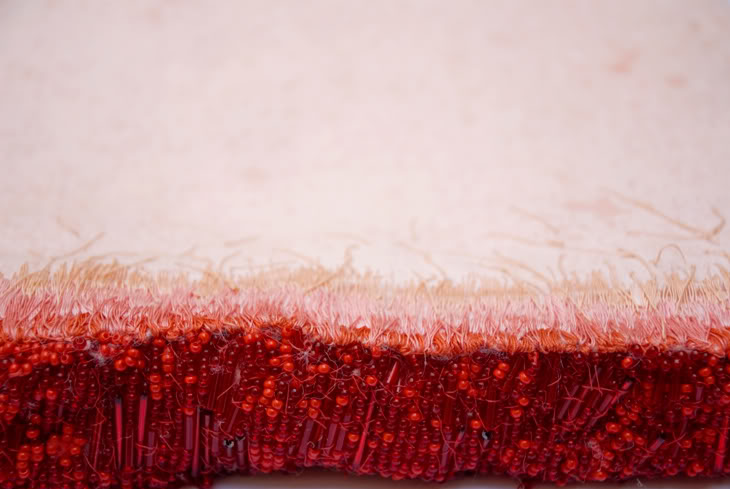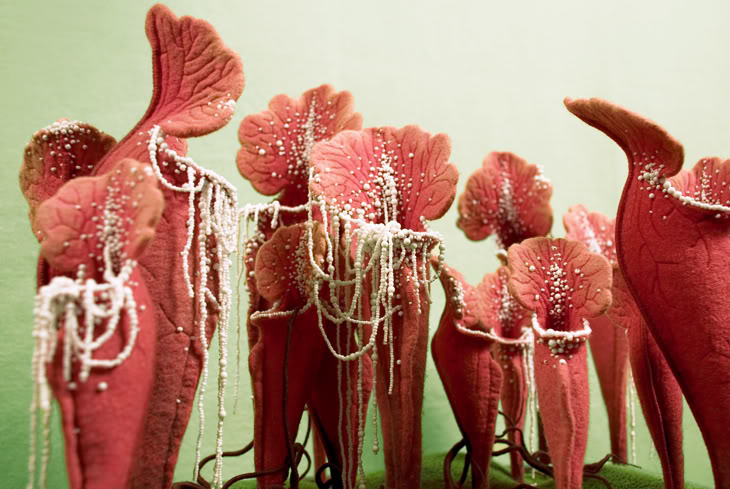b
Flora and Fauna: The Craft of Lorenzo Nanni
Lorenzo Nanni makes incredibly intricate, beautiful (often wearable) art, taking inspiration in an amazing way from organic forms and anatomical structures, reflecting a kind of gorgeous hybridization between animal and plant life, often replete with creaturesque tendrils seeming to infest as well as adorn the host. He creates his own breathtaking “lifeforms” from craft materials. I particularly love his Arteries, Veins series, the way that they depict details from anatomy as a textbook would, but in the startlingly tangible materials of his craft: felt, beads, embroidery. They look so visceral, so intricate, but remind us at the same time of their artificial construction, the biological juxtaposed with the inorganic.

